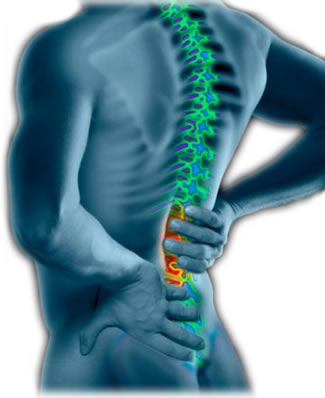Lower Back Strain and Muscle Spasms
 Unfortunately, there are many ways a dancer can experience lower-back strains and muscle spasms in their career: “lifting, arching and improper technique can all overwork and strain the lower-back extensor-erector muscles.” (Wozny, 2010) These issues can be treatable but they can also be very debilitating as well. Dancers place their back muscles in various positions and contortions, so much that it is inevitable that some form of strain or spasm is likely to occur. Similar to most other occupations, it is important to consider proper technique to keep from experiencing a back strain or spasm. Muscles that are tense often lead to more distress. By having a stretching routine (usually before and after performance/practice) dancers give themselves an upper hand in preventing muscle spasms. Remember not to ignore an injury; despite how serious you think the injury may or may not be. Active response to an injury with traditional methods of heat, cold, topical muscle aids, as well as overall attention and care, is the most proactive way to treat muscle spasms or a back injury. There are other tactics like strengthening the core muscles to create more support for the back. Abdominal muscles support the back in many ways and can also give dancers an edge when it comes to performance. There is a library’s worth of information on core strengthening. Be aware for hacks, and remember that diet will always play a part in core strength. With this information in mind, a dancer should also be aware of their limitations and realize they shouldn’t give (or be asked to give) more than what their own body is capable of. In the competitive world of dancing, it can be easy for performers to forget this simple fact, especially when coaches and performance adds a great deal of pressure to a dancer. Sometimes the will to succeed overpasses a dancer’s capabilities. Remember, your dance instructor will typically not ask you to do something that is not in your physical capabilities and skill range. If they do, it may be time to evaluate your coach or your training. However, most professionals understand the body’s limitations, so often the responsibility lies upon the dancer to relay their limitations. You know your own body.
Unfortunately, there are many ways a dancer can experience lower-back strains and muscle spasms in their career: “lifting, arching and improper technique can all overwork and strain the lower-back extensor-erector muscles.” (Wozny, 2010) These issues can be treatable but they can also be very debilitating as well. Dancers place their back muscles in various positions and contortions, so much that it is inevitable that some form of strain or spasm is likely to occur. Similar to most other occupations, it is important to consider proper technique to keep from experiencing a back strain or spasm. Muscles that are tense often lead to more distress. By having a stretching routine (usually before and after performance/practice) dancers give themselves an upper hand in preventing muscle spasms. Remember not to ignore an injury; despite how serious you think the injury may or may not be. Active response to an injury with traditional methods of heat, cold, topical muscle aids, as well as overall attention and care, is the most proactive way to treat muscle spasms or a back injury. There are other tactics like strengthening the core muscles to create more support for the back. Abdominal muscles support the back in many ways and can also give dancers an edge when it comes to performance. There is a library’s worth of information on core strengthening. Be aware for hacks, and remember that diet will always play a part in core strength. With this information in mind, a dancer should also be aware of their limitations and realize they shouldn’t give (or be asked to give) more than what their own body is capable of. In the competitive world of dancing, it can be easy for performers to forget this simple fact, especially when coaches and performance adds a great deal of pressure to a dancer. Sometimes the will to succeed overpasses a dancer’s capabilities. Remember, your dance instructor will typically not ask you to do something that is not in your physical capabilities and skill range. If they do, it may be time to evaluate your coach or your training. However, most professionals understand the body’s limitations, so often the responsibility lies upon the dancer to relay their limitations. You know your own body.

